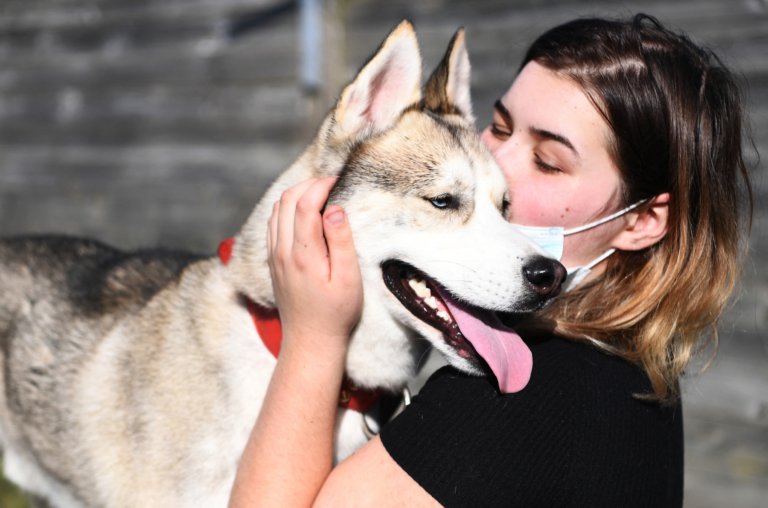
For college students, stress relief can take many forms online: shopping, ordering food, gaming with friends and meeting new romantic partners. And now they can add hanging out with therapy dogs to that list. Virtual canine comfort is emerging as a successful way for students to reduce their stress as they interact with therapy dog-handler teams.
Because they are nonjudgmental, engaging and welcoming, interacting with therapy dogs can be used as a complementary intervention that reduces student stress which may encourage students to seek more formal support services if needed. Once introduced on campus, the interest from students typically surpasses most programs’ abilities to meet the demand.
Even prior to COVID-19, being a college student was considered a stressful experience; college administrators have increasingly been seeking innovative ways to encourage students to safeguard their mental health. Spending time with therapy dogs is one proactive way for students to chip away at potentially debilitating levels of heightened stress.

Therapy dogs are nonjudgmental, engaging and welcoming. Source: Chelsea Guglielmino/Getty Images North America/Getty Images via AFP
Virtual support
In-person canine visitation programmes or canine-assisted interventions are themselves a relatively new way for students to enhance their well-being. Programmes such as the University of British Columbia’s Building Academic Retention through K9s (B.A.R.K.) programme at the Okanagan campus was established in 2012 as a way for students to reduce their homesickness, decrease their stress and foster interpersonal connections.
Several randomised controlled trials out of the B.A.R.K. lab, and elsewhere, now attest to the efficacy of spending time with therapy dogs to elicit a host of well-being outcomes.
Restrictions on in-person sessions saw the B.A.R.K. programme collaborate with human-animal interaction researcher Christine Tardif-Williams’ pre-recorded virtual canine comfort modules.
We set out to conceptualise, design and deliver a series of virtual canine comfort modules that mirrored, as close as possible, the experience of students in an in-person canine visitation session. These sessions consisted of a trained dog-handler team following a script that saw handlers welcome students and encourage reflection around stress reduction and mindfulness. Students were also asked to reflect on their social support networks.
Students could access these modules remotely, which support the well-being of students who are geographically isolated or in areas where well-being resources are overtaxed or nonexistent.
The modules are posted online on a platform that students (and others) can access without needing to sign-up for an appointment or join a waitlist.
Stress reduction
Prior to releasing these modules, we conducted a randomised controlled trial to assess how the modules would affect students’ self-ratings of stress. We assigned 467 undergraduate students to either synchronous (via Zoom) or asynchronous (pre-recorded YouTube videos) five-minute sessions that invited them to observe a dog—handler team or a handler-only condition.
We assessed well-being before and after the sessions using measures like anxiety, loneliness, connections to others, positive and negative affect. We found that all students, regardless of condition, reported significant pre-to-post improvements in self-reports of most well-being measures. However, the conditions in which the therapy dog was present elicited the most significant reduction in self-reports of stress.
Although additional research is needed, these initial findings are encouraging. They support the contention that, for students for whom attending in-person sessions are not an option, accessing virtual canine therapy modules can offer a momentary reduction in stress.
Unlike in-person sessions that are scheduled at the convenience of programme personnel, virtual canine comfort modules may be accessed as needed by students. Further, college instructors can make use of virtual canine comfort modules as part of “brain breaks” incorporated into a lecture to encourage students to reflect on, and take care of, their well-being.![]()
John-Tyler Binfet, Associate Professor, Faculty of Education, University of British Columbia
This article is republished from The Conversation under a Creative Commons license. Read the original article.










